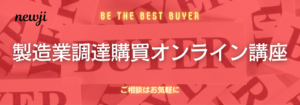- お役立ち記事
- Easy-to-understand and easy-to-use GUI design and its key points

Easy-to-understand and easy-to-use GUI design and its key points

目次
What is GUI Design?
Graphical User Interface (GUI) design is the process of creating visual components for software applications.
These components are designed to provide an intuitive and interactive experience for users.
GUIs include elements like buttons, icons, menus, and windows that users interact with on their devices.
Some common examples of GUI are found in computer operating systems, mobile apps, and websites.
The goal of GUI design is to make the interaction between the user and the device as simple and efficient as possible.
The Importance of Easy-to-Understand GUI
A well-designed GUI is crucial for the overall user experience.
If users find it easy to navigate and understand the interface, they are more likely to have a positive experience.
This can lead to increased user satisfaction and engagement, which is vital for the success of any application.
Users should be able to accomplish their tasks with minimal effort and without having to refer to a manual or guide.
An easy-to-understand GUI can significantly reduce errors and frustration, making the product more enjoyable and effective.
Principles of Easy-to-Use GUI Design
Creating an easy-to-use GUI involves following several key principles.
These principles ensure that the design is intuitive and user-friendly.
Consistency
One of the most important principles in GUI design is consistency.
The interface should have a uniform look and feel throughout the application.
Consistent use of colors, fonts, and layout helps users become familiar with the interface, reducing the learning curve.
Feedback
Feedback provides users with information about their actions.
When users interact with an interface, they need confirmation that their actions were successful.
Feedback can be in the form of visual changes, sounds, or messages that inform the user of the outcome of their interaction.
Simplicity
Simplicity is key to creating an easy-to-use GUI.
Designers should avoid clutter and unnecessary elements that can confuse users.
Keeping the design simple helps users focus on the important tasks and controls.
Visibility
Users should be able to easily see and locate all the necessary elements for completing tasks.
Important functions should be readily accessible and not hidden behind menus or multiple clicks.
Accessibility
An easy-to-use GUI should be accessible to all users, including those with disabilities.
Designers should ensure that the interface is usable by people with different needs and preferences, such as providing keyboard navigation options or screen readers.
Steps for Designing a GUI
To design an effective and easy-to-use GUI, it’s important to follow a structured process.
Here are some key steps to guide you through the design process.
Understand User Needs
Before starting the design, it’s essential to understand the needs and preferences of the target users.
Conducting user research, surveys, and interviews can provide valuable insights into what users expect from the application.
Create Wireframes
Wireframes are basic layouts that showcase the structure and elements of the interface.
They help in visualizing the design and identifying the placement of different components.
Wireframes serve as a blueprint for the final design and allow for early feedback and iterations.
Develop Prototypes
Prototypes are more detailed versions of wireframes.
They include colors, typography, and interactive elements that simulate the final product.
Prototyping allows designers to test the usability and functionality of the design before development.
Conduct Usability Testing
Usability testing involves having real users interact with the prototype to identify any issues or areas for improvement.
This step is crucial in ensuring that the design is intuitive and meets user expectations.
Feedback from testing can be used to make necessary adjustments to the design.
Iterate and Improve
Design is an iterative process, and improvements are often made based on user feedback and testing results.
It’s important to remain flexible and open to changes to create a successful GUI.
Tools for GUI Design
Various tools are available to assist designers in creating effective GUIs.
These tools offer different features for wireframing, prototyping, and designing user interfaces.
Sketch
Sketch is a popular design tool used for creating user interfaces for web and mobile applications.
It offers an intuitive interface and versatile features for vector editing and prototyping.
Figma
Figma is a collaborative design tool that allows multiple designers to work on the same project in real-time.
It provides features for wireframing, prototyping, and designing responsive interfaces.
Adobe XD
Adobe XD is a design tool from Adobe that offers powerful features for creating wireframes and prototypes quickly.
It integrates well with other Adobe products, providing a seamless design workflow.
Conclusion
Designing an easy-to-understand and easy-to-use GUI is essential for providing a positive user experience.
By following key design principles and a structured process, designers can create interfaces that are intuitive and accessible.
Using the right tools and continuously iterating on the design helps ensure the final product meets user needs and expectations.
A successful GUI design can enhance user satisfaction, leading to the success of the software application.
 資料ダウンロード
資料ダウンロード
QCD管理受発注クラウド「newji」は、受発注部門で必要なQCD管理全てを備えた、現場特化型兼クラウド型の今世紀最高の受発注管理システムとなります。
 NEWJI DX
NEWJI DX
製造業に特化したデジタルトランスフォーメーション(DX)の実現を目指す請負開発型のコンサルティングサービスです。AI、iPaaS、および先端の技術を駆使して、製造プロセスの効率化、業務効率化、チームワーク強化、コスト削減、品質向上を実現します。このサービスは、製造業の課題を深く理解し、それに対する最適なデジタルソリューションを提供することで、企業が持続的な成長とイノベーションを達成できるようサポートします。
 製造業ニュース解説
製造業ニュース解説
製造業、主に購買・調達部門にお勤めの方々に向けた情報を配信しております。
新任の方やベテランの方、管理職を対象とした幅広いコンテンツをご用意しております。
 お問い合わせ
お問い合わせ
コストダウンが利益に直結する術だと理解していても、なかなか前に進めることができない状況。そんな時は、newjiのコストダウン自動化機能で大きく利益貢献しよう!
(β版非公開)



